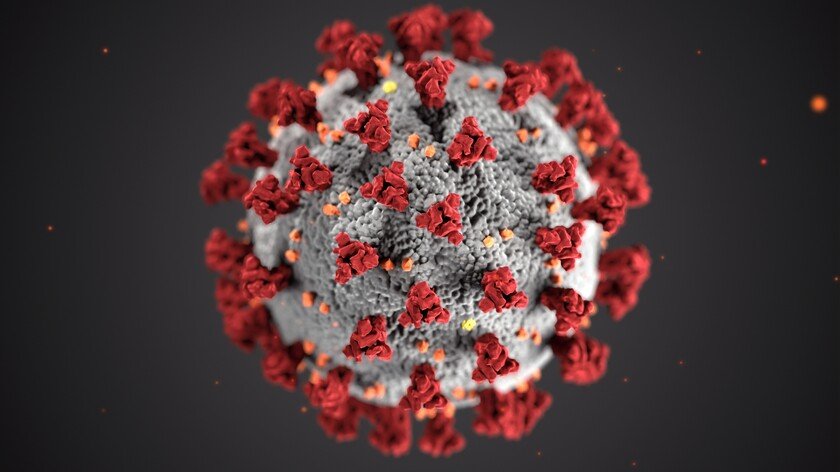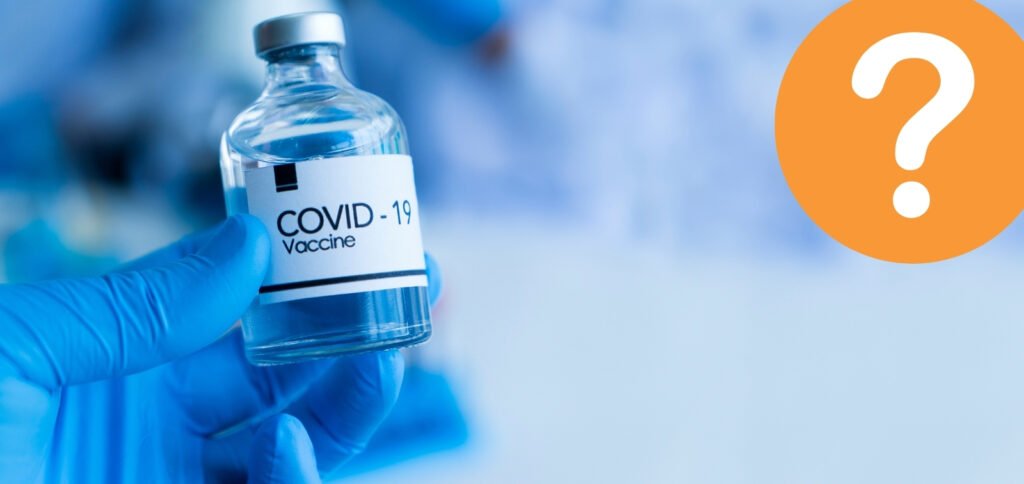Updated Questions on COVID-19
Introduction: The COVID-19 pandemic has had a significant impact on the world, affecting millions of lives and causing widespread disruption. As the situation evolves, new questions arise regarding the virus, its variants, prevention measures, treatments, and more. In this article, we will address some of the updated questions related to COVID-19, providing insights and information to help you stay informed and safe.

Table of Contents
- 1. What is COVID-19?
- 2. How does COVID-19 spread?
- 3. What are the common symptoms of COVID-19?
- 4. How can I protect myself and others from COVID-19?
- 5. What are the different COVID-19 variants?
- 6. Are the existing vaccines effective against the variants?
- 7. Can I still get infected even after being fully vaccinated?
- 8. Are there any approved treatments for COVID-19?
- 9. Can COVID-19 be transmitted through surfaces?
- 10. How long does the virus survive on different surfaces?
- 11. What are the long-term effects of COVID-19?
- 12. Can COVID-19 be transmitted from pets to humans?
- 13. What are the current travel restrictions and guidelines?
- 14. Are there any new testing methods for COVID-19?
- 15. What is the future outlook for COVID-19?
1. What is COVID-19?
COVID-19, also known as Coronavirus Disease 2019, is a respiratory illness caused by the SARS-CoV-2 virus. It was first identified in Wuhan, China, in late 2019 and has since spread globally. The virus can cause mild to severe respiratory symptoms, and in some cases, it can lead to severe illness or death.
2. How does COVID-19 spread?
COVID-19 primarily spreads through respiratory droplets when an infected person coughs, sneezes, talks, or breathes. These droplets can be inhaled by nearby individuals, leading to infection. It can also spread by touching surfaces or objects contaminated with the virus and then touching the face, mouth, or eyes.
3. What are the common symptoms of COVID-19?
The common symptoms of COVID-19 include fever, cough, shortness of breath, fatigue, muscle or body aches, headache, sore throat, loss of taste or smell, congestion or runny nose, nausea or vomiting, and diarrhea. However, it’s important to note that some individuals may be asymptomatic or experience mild symptoms.

4. How can I protect myself and others from COVID-19?
To protect yourself and others from COVID-19, it is crucial to follow preventive measures. These include:
– Getting vaccinated
– Wearing masks in public indoor settings, especially in areas with high transmission rates
– Practicing good hand hygiene by washing hands frequently with soap and water or using hand sanitizers
– Maintaining physical distance from individuals outside your household, especially in crowded places
– Avoiding close contact with people who are sick
– Following local health guidelines and regulations
5. What are the different COVID-19 variants?
Over time, the SARS-CoV-2 virus has undergone genetic changes, leading to the emergence of different variants. Some notable variants include the Alpha variant (B.1.1.7), Beta variant (B.1.351), Gamma variant (P.1), and Delta variant (B.1.617.2). These variants have shown increased transmissibility and, in some cases, the potential to evade immunity.

6. Are the existing vaccines effective against the variants?
Studies suggest that the existing COVID-19 vaccines provide a significant level of protection against the circulating variants. However, the effectiveness of vaccines may vary for each variant. Vaccination remains a crucial tool in reducing the severity of illness, hospitalizations, and deaths caused by COVID-19.
7. Can I still get infected even after being fully vaccinated?
While COVID-19 vaccines are highly effective, breakthrough infections can still occur in vaccinated individuals. However, these infections are generally milder compared to infections in unvaccinated individuals. Vaccination significantly reduces the risk of severe illness, hospitalization, and death.
8. Are there any approved treatments for COVID-19?
Several treatments have been authorized for emergency use or approved for COVID-19. These include monoclonal antibody therapies, antiviral drugs, and other supportive care measures. It is essential to consult with healthcare professionals for appropriate treatment options based on individual circumstances.

9. Can COVID-19 be transmitted through surfaces?
While it is possible to contract COVID-19 by touching contaminated surfaces and then touching the face, mouth, or eyes, the primary mode of transmission is through respiratory droplets. Regular hand hygiene and avoiding touching the face are important preventive measures.
10. How long does the virus survive on different surfaces?
The survival time of the virus on surfaces can vary depending on various factors such as the type of surface, temperature, humidity, and sunlight exposure. Studies suggest that the virus can survive for a few hours to several days on different surfaces. Regular cleaning and disinfection of frequently touched surfaces are recommended.
11. What are the long-term effects of COVID-19?
Some individuals who have recovered from COVID-19 may experience long-term effects, often referred to as “Long COVID” or “Post-Acute Sequelae of SARS-CoV-2 Infection” (PASC). These effects can include fatigue, shortness of breath, brain fog, muscle weakness, and organ damage. Long-term effects can vary in severity and duration.
12. Can COVID-19 be transmitted from pets to humans?
While there have been rare cases of pets getting infected with SARS-CoV-2, the risk of transmission from pets to humans is considered to be low. It is still recommended to practice good hygiene when interacting with pets, such as washing hands before and after contact.
13. What are the current travel restrictions and guidelines?
Travel restrictions and guidelines can vary depending on the region and the prevailing situation. It is important to stay updated on the latest travel advisories and follow the guidelines provided by health authorities and government agencies. Testing requirements, quarantine measures, and vaccination status may be considerations for international travel.
14. Are there any new testing methods for COVID-19?
Efforts are ongoing to develop and improve testing methods for COVID-19. Apart from the commonly used PCR tests, rapid antigen tests and antibody tests are also available. These tests serve different purposes and have varying levels of accuracy. Consulting healthcare professionals can help determine the most appropriate testing method based on individual needs.
15. What is the future outlook for COVID-19?
The future outlook for COVID-19 depends on several factors, including vaccination rates, the emergence of new variants, and global efforts to control the spread of the virus. Continued vaccination, adherence to preventive measures, and robust public health interventions play a crucial role in mitigating the impact of the pandemic.
Conclusion
As the COVID-19 pandemic continues to evolve, it is important to stay informed about the latest updates and guidelines. By understanding the updated questions surrounding COVID-19, we can make informed decisions to protect ourselves and our communities. Remember to follow reliable sources of information,

Here are a few additional frequently asked questions (FAQs) related to COVID-19:
1. Can COVID-19 be transmitted through food?
Currently, there is no evidence to suggest that COVID-19 can be transmitted through food. The primary mode of transmission is through respiratory droplets. However, it is still important to practice good hygiene while handling and preparing food to prevent other foodborne illnesses.
2. Is it safe to receive packages or mail during the pandemic?
The risk of contracting COVID-19 from packages or mail is considered to be low. The virus primarily spreads through respiratory droplets, and its survival on surfaces is relatively limited. However, it is always a good practice to wash your hands after handling packages or mail.
3. Can wearing multiple masks provide extra protection against COVID-19?
Wearing multiple masks, also known as double masking, can potentially provide an additional layer of protection, especially when using masks with different filtration capabilities. However, the most important factor is to ensure a well-fitting mask that covers both the nose and mouth properly.
4. Are children less susceptible to COVID-19?
While children can contract COVID-19, they generally experience milder symptoms compared to adults. However, it is important to note that children can still transmit the virus to others, including those who are more vulnerable to severe illness.
5. How effective are face shields in preventing COVID-19 transmission?
Face shields alone may not provide sufficient protection against COVID-19 transmission. They are primarily used as an additional measure along with masks, especially in situations where physical distancing may be challenging, such as healthcare settings.
Remember, staying informed, following guidelines from reputable sources such as the World Health Organization (WHO) and the Centers for Disease Control and Prevention (CDC), and prioritizing public health measures are crucial in navigating through the evolving landscape of the COVID-19 pandemic.
Here are the correct answers to the multiple-choice questions related to COVID-19:
1. Which of the following is a common symptom of COVID-19?
a) Sore throat
b) Upset stomach
c) Earache
d) Dizziness
Answer: a) Sore throat
2. How does COVID-19 primarily spread?
a) Through mosquito bites
b) Through close contact with infected individuals
c) Through consuming contaminated food
d) Through physical contact with animals
Answer: b) Through close contact with infected individuals
3. What is the recommended distance for maintaining physical distancing?
a) 1 foot
b) 3 feet
c) 6 feet
d) 10 feet
Answer: c) 6 feet
4. Which of the following is an effective preventive measure against COVID-19?
a) Avoiding handwashing
b) Gathering in large crowds
c) Wearing a mask
d) Sharing personal items
Answer: c) Wearing a mask
5. What is the most effective way to sanitize your hands?
a) Using water only
b) Wiping hands on clothing
c) Using hand sanitizer with at least 60% alcohol
d) Using plain soap without water
Answer: c) Using hand sanitizer with at least 60% alcohol
6. How long should you self-isolate if you have been in close contact with a COVID-19 positive person?
a) 1 day
b) 3 days
c) 7 days
d) 14 days
Answer: d) 14 days
7. Which of the following is an approved COVID-19 vaccine?
a) MMR vaccine
b) Polio vaccine
c) Pfizer-BioNTech vaccine
d) Tetanus vaccine
Answer: c) Pfizer-BioNTech vaccine
8. What is the purpose of contact tracing?
a) To identify COVID-19 symptoms
b) To locate COVID-19 testing centers
c) To notify individuals who have been in close contact with an infected person
d) To distribute vaccines
Answer: c) To notify individuals who have been in close contact with an infected person
9. Can COVID-19 be transmitted through surfaces?
a) Yes, only through metal surfaces
b) No, it can only be transmitted through respiratory droplets
c) Yes, but only on certain types of surfaces
d) Yes, it can survive on surfaces and be transmitted through contact
Answer: d) Yes, it can survive on surfaces and be transmitted through contact
10. How long should you quarantine if you have tested positive for COVID-19?
a) 3 days
b) 7 days
c) 10 days
d) 14 days
Answer: d) 14 days
Remember, the correct answers to these questions may change based on the latest scientific research and recommendations. Stay updated with reliable sources of information and follow the guidelines provided by health authorities.
https://nursingscholar101.com/100-multiple-choice-questions-mcqs-for-nur/





